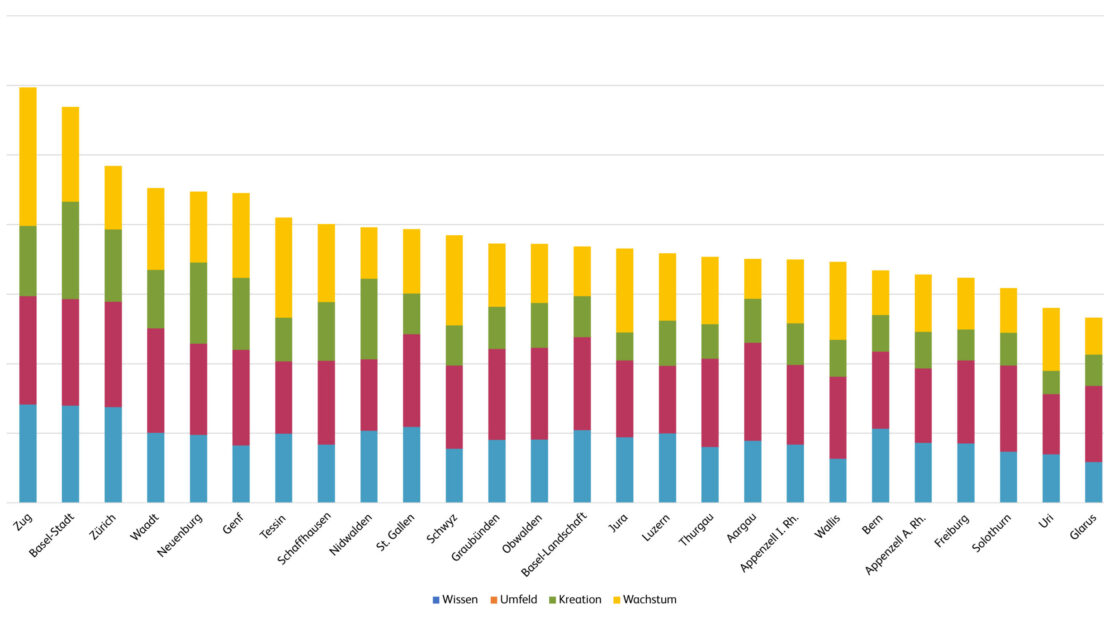These cantons lead Switzerland

Innovation and creativity are decisive factors for economic growth and prosperity in Switzerland. With the Cantonal Innovation and Creativity Index (KIKI), the Lucerne University of Applied Sciences and Arts has developed an instrument that enables a well-founded comparison of the cantons for the first time. A powerful and future-orientated look at the drivers of economic success.
With the KIKI, the Lucerne University of Applied Sciences and Arts has presented an analysis model that measures innovation and creativity in the cantons. “The KIKI is the first cantonal index to analyse these key capabilities regionally and in detail,” explains Christoph Hauser, Professor at the Institute of Business and Regional Economics at Lucerne University of Applied Sciences and Arts. The index consists of 101 individual indicators, which are divided into four subject areas and eight thematic pillars. Data sources include the Federal Statistical Office and the federal innovation agency Innosuisse.
Canton Zug leads the ranking
Based on the data for 2024, the canton of Zug takes first place with just under 60 out of a possible 100 points. It is followed by Basel-Stadt and Zurich. The cantons of Vaud, Neuchâtel and Geneva are close behind in fourth to sixth place. Zug leads in the areas of knowledge, creation and growth, while Basel-Stadt has the highest score for creation. Zurich is well ahead in almost all indicators, except for growth.
Diverse expressions of innovation and creativity
The KIKI shows that innovation and creativity are expressed in many different ways. “There is no single, simple means of promoting this,” emphasises Hauser. The cantons at the bottom of the rankings achieve almost half the points of Zug, which is respectable given the high level. Uri with its good growth and Glarus with strong supporting factors deserve special mention.
The eight pillars of the KIKI
The KIKI is based on the Global Innovation Index (GII) and consists of input and output factors. Input factors favour innovation and creativity, while output factors measure their impact. The eight pillars include
- Education and educational success: indicators on supply and success rates in education.
- Research, development and knowledge: Statistics on research activities and expenditure.
- Diversity: Diversity of society in terms of ethnic origin, gender and culture.
- Supporting factors: Framework conditions that promote innovation.
- Art and culture: Creative forms of expression and their promotion.
- Patents, trademarks and designs: Protection and utilisation of intellectual property.
- Companies and start-ups: Start-up activity and growth of companies.
Innovation and economic strength go hand in hand
The KIKI shows a close correlation between innovation, creativity and the economic strength of the cantons. Switzerland, which is recognised as the most innovative country in the world according to the Global Innovation Index, benefits from these capabilities. The analysis emphasises the importance of education, research and supportive framework conditions for economic success.
This article provides a comprehensive and forward-looking overview of Switzerland’s most innovative cantons and the importance of innovation and creativity for economic growth.